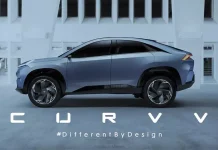Harley Davidson Q3 2023 Financial Results
Overall
- Harley Davidson Incorporated reported a 24% drop in profits over Q3 of 2022.
- Worldwide retail motorcycle sales for all Harley-Davidson bikes (excluding LiveWire) were down by 16% year on year.
By Region
- North America: -15%
- EMEA: -13%
- Asia Pacific: -24%
- Latin America: -11%
LiveWire
- LiveWire recorded 50 electric motorcycle shipments in Q3 2023, a 76% decrease over Q3 2022.
The latest financial results from Harley-Davidson reveal a challenging landscape for the iconic motorcycle manufacturer. Several factors could be contributing to the downturn in sales and the sharp decline in LiveWire shipments, and it’s important to consider these in the context of both the company’s strategies and broader market trends.

Motorcycle Sales
- Economic and Market Conditions: The global economic environment, possibly still reeling from the impacts of the COVID-19 pandemic, trade tensions, supply chain disruptions, and inflation, can significantly affect consumer purchasing power and confidence. For big-ticket items like motorcycles, these factors can lead to reduced consumer spending.
- Changing Consumer Preferences: The market for motorcycles is evolving, with a noticeable shift towards sustainability and urban mobility solutions. While Harley-Davidson has dominated the cruiser and touring motorcycle segment, it’s facing competition from manufacturers offering lightweight, environmentally friendly, and lower-cost alternatives. The brand may also be experiencing a disconnect with younger generations who might prefer these alternatives to traditional motorcycles.
LiveWire
- LiveWire’s Challenges: The significant decrease in LiveWire shipments is particularly notable. Being a high-end electric motorcycle, LiveWire not only contends with the typical challenges of new product lines, such as production scaling and market acceptance, but also with specific barriers to EV adoption—like charging infrastructure, range anxiety, and upfront costs. The relatively slow embrace of electric motorcycles in the U.S. contrasts with more enthusiastic uptake in regions like Europe and Asia, potentially due to stronger environmental regulations, different commuting habits, and urbanization patterns.
Electric Motorcycles
- Strategic Reorientation: Harley-Davidson’s overall strategy under CEO Jochen Zeitz has been about streamlining its product portfolio, focusing on core markets, and investing in electric motorcycle technology. The “Rewire” and “Hardwire” strategies, aiming to reposition Harley-Davidson for the future, might have short-term repercussions as the company restrains production to align with demand and focuses on high-margin motorcycles, potentially alienating some existing customers or leaving gaps that competitors can exploit.
- Brand Perception and Market Expansion: While Harley-Davidson is a storied brand with a loyal following, it has struggled to break away from its traditional image and appeal to new demographics, particularly younger riders seeking diverse riding experiences. Its expansion into electric motorcycles, though futuristic, must still contend with the brand’s entrenched identity.
Profits and Decline
Moving forward, it’s crucial for Harley-Davidson to navigate these challenges strategically. Success may hinge on its ability to innovate, particularly in electric mobility, without alienating its core customer base. Expanding market presence, adapting to changing consumer preferences, and addressing issues related to the practicality of electric motorcycles are key steps in ensuring sustainable growth.
For LiveWire, the journey ahead involves building market confidence in electric motorcycles, expanding in regions receptive to EV adoption, and possibly revisiting the product’s price positioning to enhance its attractiveness. The S2 Del Mar’s reception in Europe and other new markets could be a significant indicator of LiveWire’s future trajectory in the global electric motorcycle segment.
Harley-Davidson faces a pivotal moment in its storied history, marked by challenging dynamics including shifting consumer preferences, an urgent need for innovation in the electric vehicle sphere, and external economic pressures. The downturn in traditional motorcycle sales and the steep decline in LiveWire shipments underscore the urgency with which the company needs to adapt to a rapidly evolving market landscape.
The company’s commitment to electric mobility, exemplified by its spin-off of LiveWire, is a forward-looking move, though it comes with substantial short-term challenges. To navigate this terrain, Harley-Davidson must strike a balance between honoring its heritage and evolving to meet the demands of a new generation of riders. This includes reassessing its market strategies, potentially redefining its brand appeal, and continuing to invest in technologies and markets that promise sustainable growth.





































